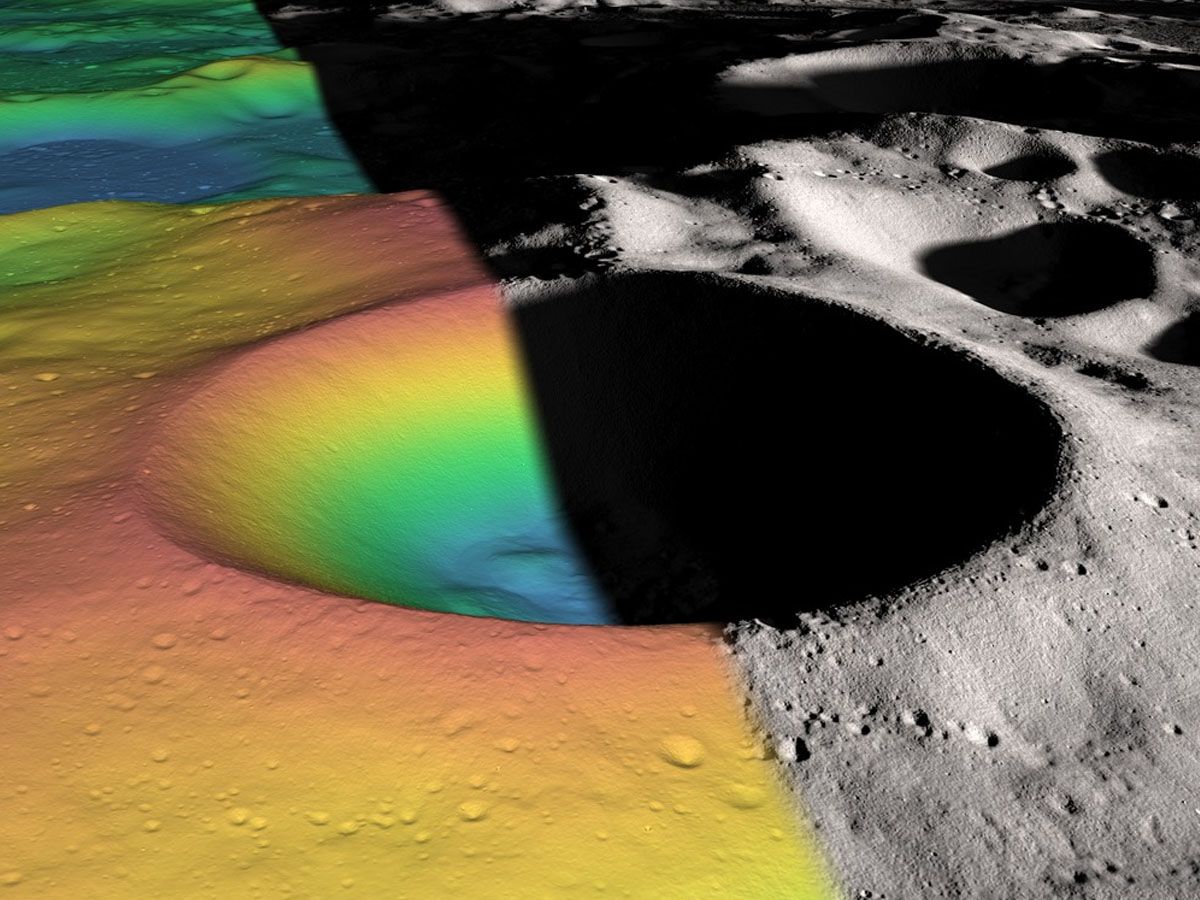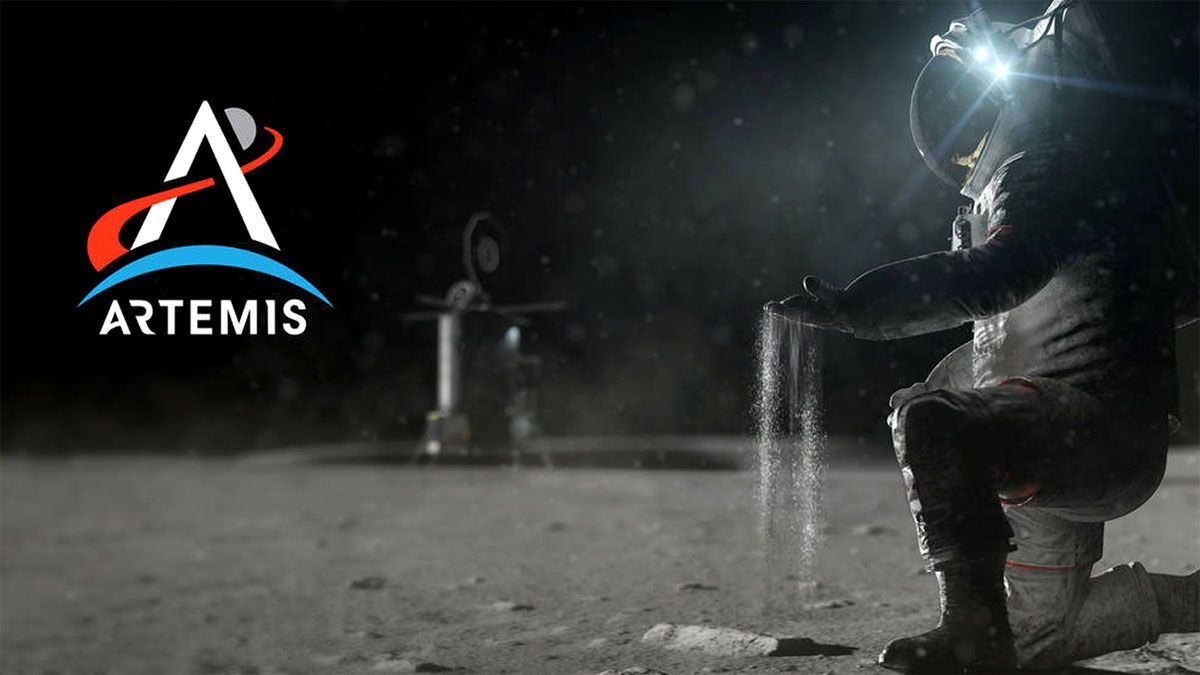For over five decades, we've seen the moon as a desolate rock orbiting our planet, but recent research suggests a revolutionary possibility: could the moon harbor life?
We aren't talking about little green aliens, but simple, yet hardy microorganisms tucked away in the moon's cold, shadowy craters.
In 2025, NASA's Artemis 3 mission plans to land astronauts near the moon's south pole, a location that holds great promise for these microbial hideaways.
But with this thrilling prospect, several intriguing questions arise. How could life exist on the moon? What does it mean for our understanding of life beyond Earth?
The Return to the Moon: Artemis 3 Mission
Imagine a journey back to a place we once thought we knew well, only to discover there's still so much to explore. This is precisely what the Artemis 3 mission signifies.
Set to lift off at the end of 2025, this journey marks a significant milestone as the first human lunar landing since the legendary Apollo 17 in 1972.
Spearheaded by NASA, the mission aspires to step into the uncharted territory of the lunar south pole.

This isn't just any trip to the moon. It's a step into a new era of space exploration and discovery, potentially rewriting what we know about our closest celestial neighbor.
But how do you choose the perfect place to land on a celestial body nearly a quarter of a million miles away? It's no easy task.
The Artemis Polar Exploration Zone, a region sitting beyond 84 degrees south latitude, is a prime target. However, determining the exact landing site for Artemis 3 is a challenge packed with anticipation and high hopes.
The expectations? To unravel astonishing discoveries, possibly even detecting signs of life. New research hints at the existence of microbial life, which could survive in the super-cold, permanently shadowed craters near the lunar south pole.
As we inch closer to the Artemis 3 mission, we hold our breath, wondering: Will this be the journey that uncovers life on the moon?
Theories of Lunar Life Existence
Some scientists are making waves with their theories that the moon, specifically the south pole's chilly, shadowy craters, could potentially harbor microbial life. Prabal Saxena, from NASA's Goddard Space Flight Center, is one of these trailblazers.
He highlights the possibility of life flourishing under certain conditions, expanding our comprehension of where life can exist.
But where might these microorganisms come from, and how could they survive in such a hostile environment?

The answer could lie closer to home than you might think - on Earth itself. Let's consider two possibilities.
One: Earth and the moon have been trading rocks via meteorite impacts for billions of years. Could some of these "Earth meteorites" have carried hardy Earth microbes to the moon? It's plausible, but the survival of these Earth microbes is still up for debate.
Two: humans themselves might be the primary source of lunar microbes. With every human mission, we potentially leave microbial stowaways behind. Not to mention, the increased traffic to the moon could deposit carbon dioxide and water ice, altering the lunar landscape.
The Attractiveness of the Lunar South Pole
So why are all eyes on the lunar south pole, and what makes it so special? The allure lies in its unique landscape. Envision vast areas cast in permanent shadows, juxtaposed with regions that enjoy almost perpetual sunlight.
These shadowed regions, home to large craters, are so cold that they can trap water ice, a crucial ingredient for life as we know it.
This polar environment could offer a safe haven if microbes hide on the moon. Even in the harshest environments, life can surprise us with its resilience.
Shackleton Crater
The Shackleton crater, a colossal indentation at the moon's south pole, is particularly intriguing. Its permanently shadowed regions and potential ice reserves make it an excellent candidate for a microbial refuge.

The moon's quiet, dark corners could provide a stable, icy retreat for extreme microorganisms, or 'extremophiles,' known to survive harsh conditions. But can Earth's microbes adapt to such an extreme environment?
Survivability of Earth Microbes on the Moon
Remarkably, certain Earth microbes could withstand extreme lunar conditions. These extremophiles, as they're called, are masters of survival, capable of enduring intense radiation, cold, and vacuum.
Could they have hitched a ride on lunar landers, voyaged across the vastness of space, and set up camp on the moon? It's not out of the question.
So, while the lunar south pole's ice-filled craters may seem hostile to us, for these microbes, they could be the perfect home away from home.
The Effect of Human Activity on Lunar Microbial Growth
The activities of human missions could potentially affect the moon's environment. For example, the Artemis spacecraft could deposit substances like carbon dioxide and water ice in shadowed regions.
This may sound harmless, but these deposits could affect the survival and growth of lunar microbes.

Furthermore, exhaust from spacecraft might impact the moon's north pole, as suggested by scientist Paul Lucey.
Therefore, conducting experiments to understand how these activities might affect the lunar environment is vital.
Broader Implications of Discovering Lunar Life
Discovering life on the moon would ripple through society, influencing our perception of the universe and our place within it. If we can find life in the moon's harsh landscape, where else might we find it?
Interestingly, the study of lunar life could have exciting implications for Mars exploration. The Red Planet, like the moon, has regions believed to be capable of supporting life.

Research strategies developed for investigating potentially habitable niches and planning traverse routes on the moon could be applied to Mars.
Essentially, our neighboring moon could serve as a blueprint for future interplanetary missions. By studying life's potential on the moon, could we be opening doors to understanding life on Mars and beyond?
Sources: space.com












